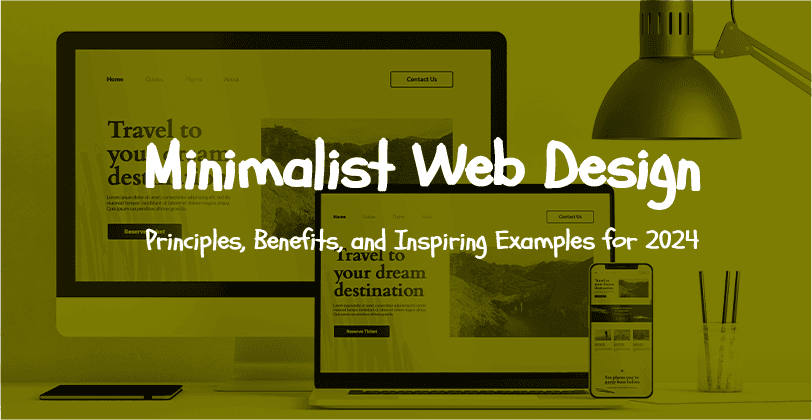Mastering Minimalist Web Design: A Guide for 2024
Minimalist web design continues to thrive in 2024, offering simplicity, functionality, and aesthetic appeal. By adopting this design approach, you can create a simple-looking website that communicates effectively and delivers a superior user experience. In this article, we’ll dive into the principles of minimalist web design, showcase minimalist website design examples, and explore how it aligns with modern trends like colorful minimalism web design.
What is Minimalist Web Design?
Minimalist web design is an intentional approach that strips away visual clutter to enhance user experience, focusing on essential elements, purposeful white space, and refined typography. This design philosophy emphasizes clean layouts, strategic color choices, and functional simplicity to create websites that are both aesthetically pleasing and highly usable – embodying the principle that thoughtful reduction leads to more impactful digital experiences.
Key points about minimalist web design:
Typography: Typography is the art and science of arranging text to transform written language into a powerful visual tool that's not only legible and readable but also visually compelling. This craft encompasses thoughtful decisions about typeface selection, size hierarchy, line measurements, spacing between lines and letters, and the precise adjustment of space between specific character pairs—all working together to create harmonious and effective visual communication.
Negative space: Negative space is the strategic breathing room between layout elements. Also known as white space, it carries equal importance to the content itself. Minimalist website design relies heavily on these intentional voids. It stands as one of the most vital principles in minimalist digital design.
Flat design: Flat design embraces two-dimensional simplicity by removing depth elements such as shadows and gradients in favor of clean, crisp graphics. This approach delivers both contemporary visual appeal and improved website performance.
Limited colors: Minimalist website design employs a carefully curated color palette to create visual impact. This limited color scheme applies to all website elements and interface components, excluding content images. While content images may complement the site's color scheme, they exist independently of the core design palette.
User Experience: User experience encompasses the complete interaction and relationship between a person and a digital product, measuring the quality of each touchpoint through their perception of usability, efficiency, and overall value.
Visual hierarchy: Minimalist design harnesses the power of visual hierarchy to subtly navigate users through content, emphasizing key elements. By thoughtfully orchestrating the placement of design features and textual components, designers skillfully channel the audience's gaze toward pivotal focal points — be it compelling call-to-action prompts, essential messages, or spotlighted products.
Better loading speed: As highlighted earlier, minimalistic web design naturally aligns with swifter loading speeds. Websites plagued by sluggish load times not only irritate visitors but also suffer in search engine rankings. In an era dominated by the demand for immediate satisfaction, a fast-loading site plays a crucial role in enhancing user experience and fostering greater audience retention.
Easier navigation: Intuitive menu structures and clear pathways that help users find what they need without confusion or frustration.
Images and graphics: Minimalist website design embraces a restrained approach to imagery and graphical elements, thoughtfully separating them to amplify their visual impact. The color schemes often feature bold tones, though kept to a limited palette. These visuals tend to be more compact than typical website components and are seldom used as backgrounds, buttons, or decorative accents.
White space: White space, often referred to as negative space, is the unoccupied area between elements on a webpage. It serves as a potent design element in minimalist web aesthetics, fostering a sense of harmony, sophistication, and clarity. Generous use of white space around text, images, and other components lends your page a polished and uncluttered appearance. Moreover, it enhances readability and helps direct the user's attention to the core content.
Functional navigation: Navigation menus are simple and intuitive, allowing users to effortlessly locate what they need without any hassle.
Mobile responsiveness: With mobile devices now dominating digital content access, prioritizing mobile responsiveness is essential. Prototyping allows you to assess how your minimalist design seamlessly adjusts to various screen dimensions and orientations while preserving both its elegance and functionality.
Simplicity: Minimalist websites embody the philosophy that "simplicity is the ultimate sophistication." It's not merely about stripping away elements but ensuring that only the essentials remain. This approach emphasizes that effective UI design should never distract users but instead guide them seamlessly through the content toward meaningful actions.
Typography in minimalist design: Minimalist fonts eliminate unnecessary embellishments, prioritizing clarity and practicality. Characterized by clean lines and geometric forms, they forgo decorative elements. The outcome is a sleek, readable typeface that seamlessly complements diverse design applications, from websites to logos.
Accessibility: Accessibility is a critical aspect of any website design, including minimalist layouts. To accommodate users with disabilities, maintain appropriate contrast levels, provide descriptive alternative text for images, and ensure full keyboard navigability throughout the site.
Brand image: Clear visual communication that reflects professionalism and builds trust through consistent, uncluttered design choices.
Conversion optimization: Focused design that removes distractions and highlights calls-to-action, improving user engagement and conversion rates.
Search engine optimization: Clean code and fast-loading pages that naturally align with search engine preferences, improving visibility and rankings.
Benefits of Minimalist Web Design
1. Faster Load Times
Minimalist websites load faster due to fewer elements, improving user experience and search engine rankings. This is crucial in the age of Google's Core Web Vitals.
2. Enhanced User Experience
A minimalist homepage reduces distractions, guiding users to essential content.
3. Mobile-Friendly Design
Simple websites are inherently responsive, adapting to various screen sizes seamlessly.
4. Timeless Appeal
Unlike trendy designs, minimalist sites maintain their visual appeal over time, reducing the need for frequent updates.
5. Improved SEO Performance
The simplicity of minimal websites often leads to better crawlability by search engines, enhancing rankings.
Minimalist Website Design Examples
1. Apple
Apple’s website epitomizes minimalist design, showcasing products with clean layouts and focused presentations.
2. Dropbox
The minimalist web page design of Dropbox uses simplicity to highlight its core features.
3. Airbnb
Airbnb combines vibrant imagery with minimalistic designs, delivering an engaging yet uncluttered user experience.
These minimalist website examples demonstrate how simplicity can be both beautiful and functional.
Creating Your Own Minimal Website Design
1. Focus on Essential Content
Remove unnecessary elements that don’t contribute to your message.
2. Prioritize Simple Navigation
Ensure users can effortlessly find information with a clean, intuitive menu.
3. Use Negative Space Strategically
Guide users’ eyes naturally through the content with well-placed white space.
4. Embrace Subtle Animations
Incorporate smooth transitions and micro-interactions to maintain engagement.
5. Experiment with Bold Typography
Make typography a central design element to create a visual hierarchy.
Trends in Minimalist Web Design for 2024
1. Colorful Minimalism
While simplicity remains key, designers are exploring vibrant color schemes within minimalistic websites to add a modern touch.
2. Dark Mode
Offering a minimal web page design in dark mode provides a sleek, user-friendly option.
3. Subtle Motion Graphics
Gentle animations guide user attention without overwhelming the minimalist aesthetic.
4. Micro-Interactions
Small animations provide instant feedback, enhancing user experience.
5. Bold Typography Trends
Expressive and dramatic fonts create a striking contrast against clean backgrounds.
Tips for Designing a Minimalist Website
Start with a Clear Goal: Understand the purpose of your site.
Keep Elements Functional: Each element should serve a purpose.
Use a Grid Layout: Maintain structure and organization.
Test on Multiple Devices: Ensure your site looks great everywhere.
Optimize for Speed: Keep the site lightweight for fast loading times.
Final Thoughts on Minimalist Web Design
Minimalist web design is a timeless approach that aligns with both user preferences and technological advancements. Whether you're inspired by cool minimalist websites or drawn to the functionality of simple design websites, this approach offers versatility and effectiveness. As trends like colorful minimalism gain momentum, incorporating these elements can elevate your web design strategy.
Ready to create your minimalist website? Contact us today to turn your vision into a sleek, functional reality.

Brad
Author
Comments




